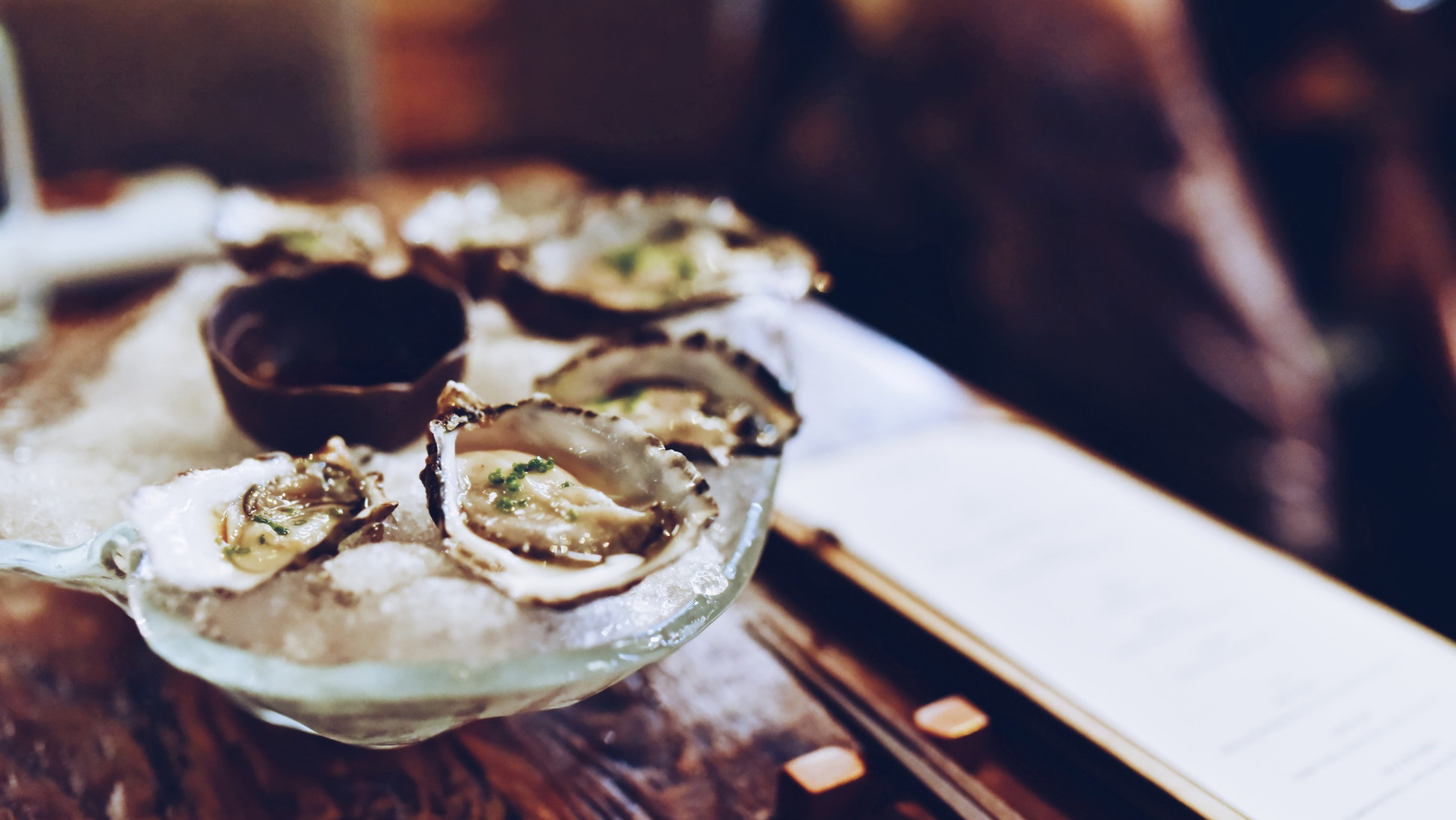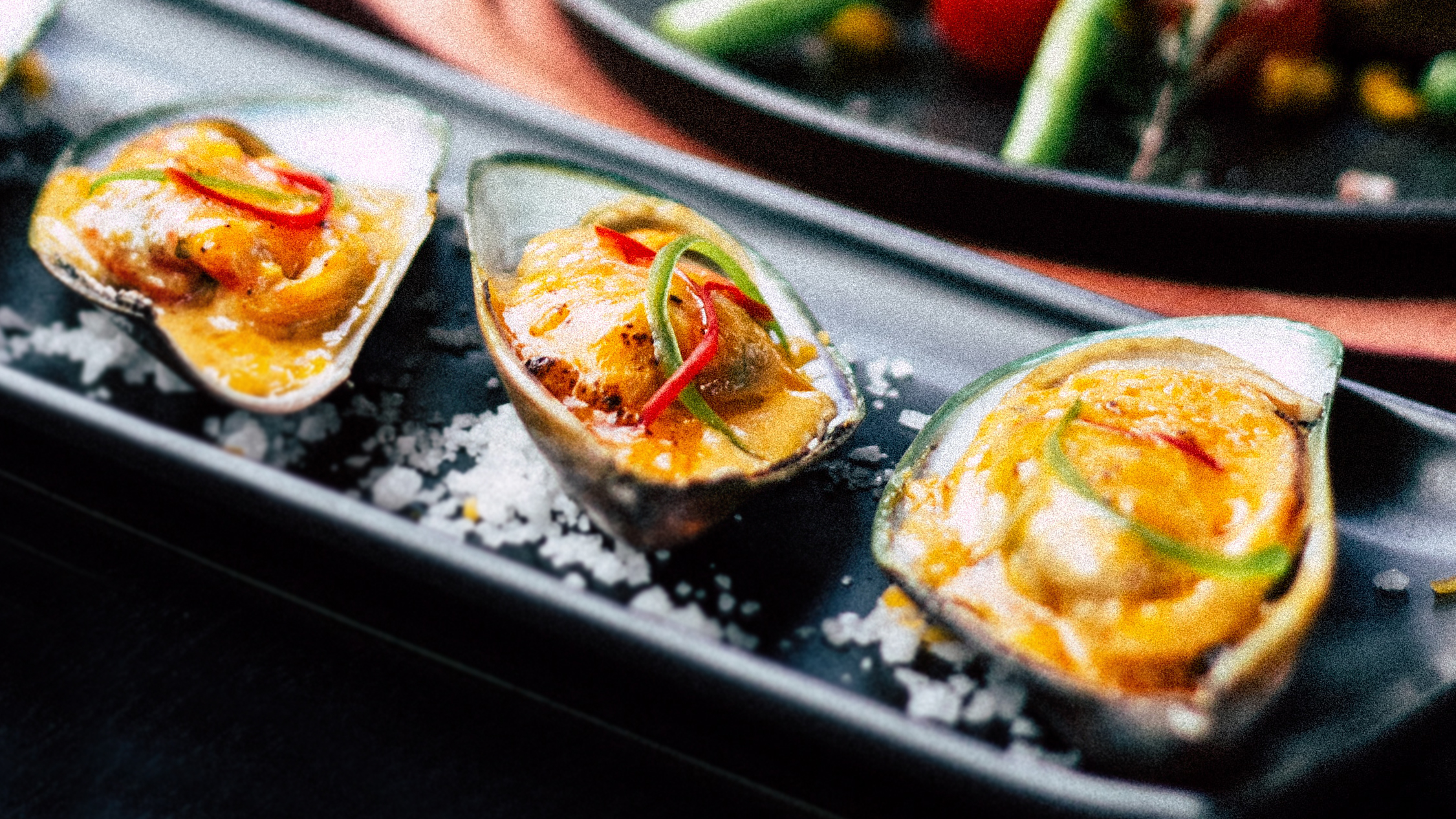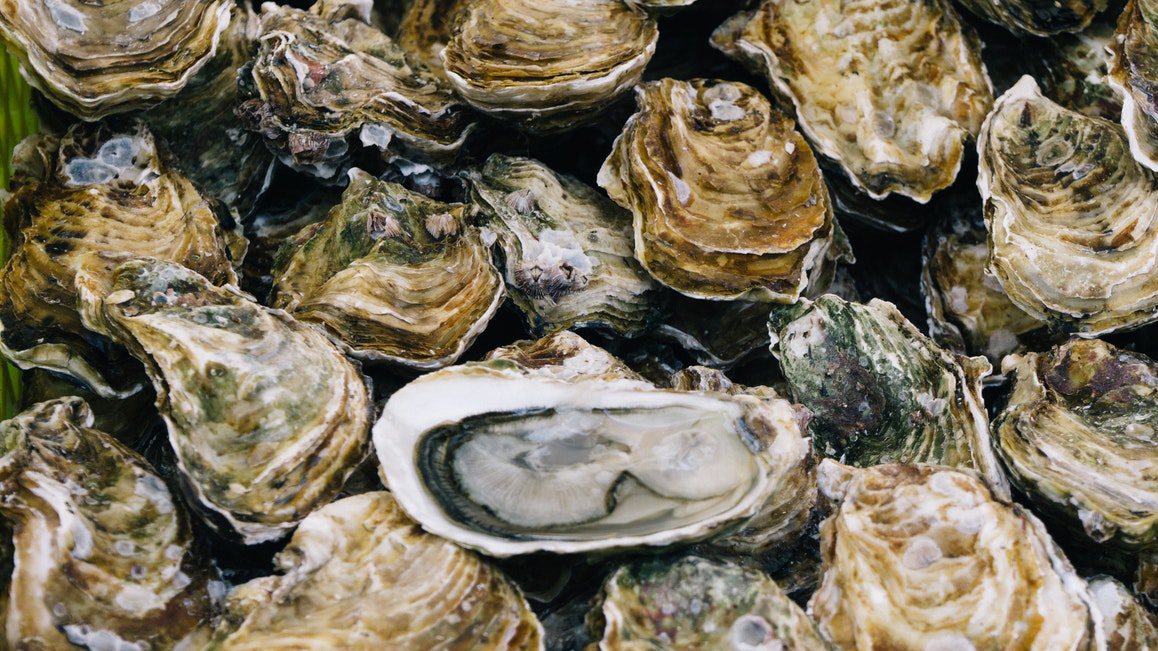Oyster season begins. The most experienced among us already know all the features of eating these strange creatures, and for beginners we asked Anatoly Petrenko (restaurant SEVEN ) to give recommendations on how to get acquainted with the delicacy. |  |
You have to get to oysters: your gastronomic taste must switch from traditional food habits - cutlets, buckwheat - a certain level of gastronomic education must appear. And before you start eating, it’s worth reading what a wild oyster is, what a farm oyster is, how long it grows; know that a large oyster 700-800 grams can already be 8-9 years old, that a small oyster, number 3, from 50 to 80 grams, grows for 2-3 years. Oyster is an expensive product. If it is farmed, it requires careful care, starting from the embryo and one-year-old fry to ripening and acquiring gastronomic value. People specially go to the sea for them, to klers - special backwaters in a certain place where there are ebbs and flows.
It is necessary to understand the philosophy of this product - that it is not just a shell, as the famous writer said, it squeaks and looks at you from the shell with its eyes, but a gastronomic delight, a food habit: we are used to eating cabbage soup, and the French are used to eating oysters. For those who are not familiar with With this product, you need to choose the simplest, smallest oysters so that they are understandable and quickly swallowed. So that it is not a huge oyster from Aniva Bay, 700 grams, which needs to be cut - you will crush its liver and heart and will not understand what you have eaten. So I recommend starting with number three.

Neutral flavors are fin de clere and white pearl: a slight smell of cucumber, the smell of the sea, minerality and moderate saltiness, which is very important. Each sea, each body of water has its own salt level, which is measured in ppm. If the Far East is 31-33 ppm of salt per cubic meter of water, then in the Barents Sea it is as much as 36 (there are no oysters there), and in the Black Sea only 16. That is, different salinity gives the meat a different taste. The oyster is what it eats. It grows from the movement of plankton: it opens, and plankton passes through it with the ebb and flow of the tides.
The correct way to eat oysters is with special oyster forks. In an establishment, the oyster meat may or may not be trimmed; accordingly, with an oyster fork you can easily trim the muscle on which the meat is attached and eat it. Hobbyists and connoisseurs usually drink the liquid that remains in the sink.
Traditionally they are served over crushed ice with lemon and a traditional vinaigrette made from red wine vinegar, finely chopped shallots and sometimes spices; they are served with croutons, sometimes they experiment with sauces and additionally serve butter. However, I am against serving with butter, because excess fat puts pressure on the pancreas. And you need to start with small portions - a maximum of 3 oysters: a large portion also puts a very large load on the pancreas.

If you want to get the full spectrum of gastronomic pleasure, be sure to eat accompanied by dry sparkling wine - in my opinion, this is the most exquisite gastronomic pairing that humanity has come up with. You can experiment with everything, but you need to try the classics, and then look for yourself.
There is an opinion that you can’t chew them - this is wrong, it’s food! You can do whatever you want with it, otherwise you won’t understand the taste. And it is important that you first need to eat an oyster and then drink it down, not the other way around.
Some countries, such as the United States, serve baked oysters. There is such a recipe - “Rockefeller”: bread crumbs, Parmesan, chopped spinach are placed on an oyster, sprinkled with olive oil and baked in the oven. The dish is served hot. For those who don’t eat raw, this is one of the serving options, it’s very tasty.

The freshness of a package of oysters can be determined by its smell. You can see how many are opened, but an open oyster can close when you put it in the water. In general, the concept of “fresh oyster” is not very correct: it must be alive. Typically, a freshly caught oyster can be stored without loss of quality for up to 5-7 days in the refrigerator at a temperature of +3-5 degrees, covered with a damp cloth. In special refrigerator-aquariums, which, by the way, we have, with a water purification system and salinity settings, it can easily live for up to a month.
But there is a subtle point - it is important to know where this oyster came from. Because there are very unfavorable areas, for example, one ofparts of Peter the Great Bay in the Far East, where the sea is catastrophically dirty. There are oysters, we can get them, but they contain a very large amount of heavy metals. During their life, they pass through dirty water like a filter, and it would seem that the oyster is alive and fresh, but you eat it and get poisoned.
And having tried oysters from the Busse Lagoon, where salt and fresh waters mix, and the unique landscape is untouched by man - a person comes there, takes oysters from the sea and leaves - it’s like you’re traveling in a time machine: a million years ago you could have eaten exactly the same there product.
When receiving an oyster for the table, the first thing you need to pay attention to is its appearance: how it was opened - it should be smooth, with an even halo, should not be dry and should smell pleasantly of the sea and cucumber. Although oysters, like wine, have a very wide range of aromas, there should be no question about the smell. And if your nose is stuffy, the easiest way to check freshness is to take an oyster in your hand and lightly press the eyelash with a metal object - the halo contracts, and this means that the oyster is alive.

















































/https%3A%2F%2Fcomplexbar.com%2Fimages%2Fblog%2F58%2Fhughes.jpeg)

/https%3A%2F%2Fcomplexbar.com%2Fimages%2Fblog%2F246%2Fsirop_scale_2400.jpeg)
/https%3A%2F%2Fcomplexbar.com%2Fimages%2Fblog%2F246%2Fkofe-vostochniy.jpg)
/https%3A%2F%2Fcomplexbar.com%2Fimages%2Fblog%2F245%2Fpexels-jason-villanueva-851555.jpg)
/https%3A%2F%2Fcomplexbar.com%2Fimages%2Fblog%2F246%2F2024-04-09_17.22.54.jpg)
/https%3A%2F%2Fcomplexbar.com%2Fimages%2Fblog%2F246%2F2024-04-09_17.22.47.jpg)
/https%3A%2F%2Fcomplexbar.com%2Fimages%2Fblog%2F246%2FCODE_anons_foamydrops_752%D1%85480_eng.jpg)
/https%3A%2F%2Fcomplexbar.com%2Fimages%2Fblog%2F246%2FAlina_752%D1%85480_eng.jpg)
/https%3A%2F%2Fcomplexbar.com%2Fimages%2Fblog%2F246%2F2024-04-09_17.23.22.jpg)
/https%3A%2F%2Fcomplexbar.com%2Fimages%2Fblog%2F246%2F2024-04-09_17.23.28.jpg)
/https%3A%2F%2Fcomplexbar.com%2Fimages%2Fblog%2F246%2F2024-04-09_17.23.35.jpg)
/https%3A%2F%2Fcomplexbar.com%2Fimages%2Fblog%2F246%2Fdrinksome_752%D1%85480_eng.jpg)
/https%3A%2F%2Fcomplexbar.com%2Fimages%2Fblog%2F246%2Fnude_752%D1%85480_eng.jpg)
/https%3A%2F%2Fcomplexbar.com%2Fimages%2Fblog%2F246%2F752%D1%85480_eng__1_.jpg)
/https%3A%2F%2Fcomplexbar.com%2Fimages%2Fblog%2F246%2F752%D1%85480_eng.jpg)
/https%3A%2F%2Fcomplexbar.com%2Fimages%2Fblog%2F246%2FStudioRaw_752%D1%85480_eng.jpg)
/https%3A%2F%2Fcomplexbar.com%2Fimages%2Fblog%2F246%2FDoppio_tea_752%D1%85480_eng.jpg)
/https%3A%2F%2Fcomplexbar.com%2Fimages%2Fblog%2F246%2FTognana_Stars_Stripes_752%D1%85480_eng.jpg)
/https%3A%2F%2Fcomplexbar.com%2Fimages%2Fblog%2F246%2FRona_752%D1%85480_eng.jpg)
/https%3A%2F%2Fcomplexbar.com%2Fimages%2Fblog%2F246%2FDoppio_vending_752%D1%85480_eng.jpg)
/https%3A%2F%2Fcomplexbar.com%2Fimages%2Fblog%2F246%2FEssence_sukhie_smesi_752%D1%85480_eng.jpg)
/https%3A%2F%2Fcomplexbar.com%2Fimages%2Fblog%2F246%2FODK_sukhie_smesi752%D1%85480_eng.jpg)
/https%3A%2F%2Fcomplexbar.com%2Fimages%2Fblog%2F246%2Funiforma-barmena.jpg)
/https%3A%2F%2Fcomplexbar.com%2Fimages%2Fblog%2F246%2Fkak-nanyat-barmena.jpg)
/https%3A%2F%2Fcomplexbar.com%2Fimages%2Fblog%2F246%2Fsirop_scale_2400.jpeg)
/https%3A%2F%2Fcomplexbar.com%2Fimages%2Fblog%2F246%2FPeugeot_Anons_Paris_U%27Select_Line_Daman_752%D1%85480_eng.jpg)
/https%3A%2F%2Fcomplexbar.com%2Fimages%2Fblog%2F246%2Fkofe-vostochniy.jpg)
/https%3A%2F%2Fcomplexbar.com%2Fimages%2Fblog%2F246%2FMadler.jpg)
/https%3A%2F%2Fcomplexbar.com%2Fimages%2Fblog%2F246%2Fprofbartender_glavn.jpeg)